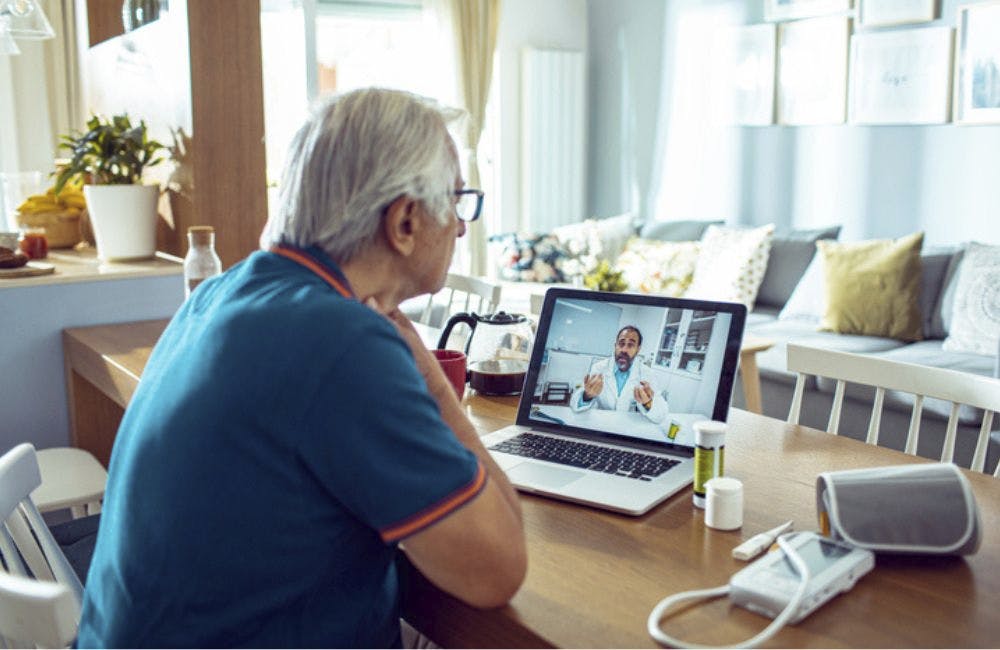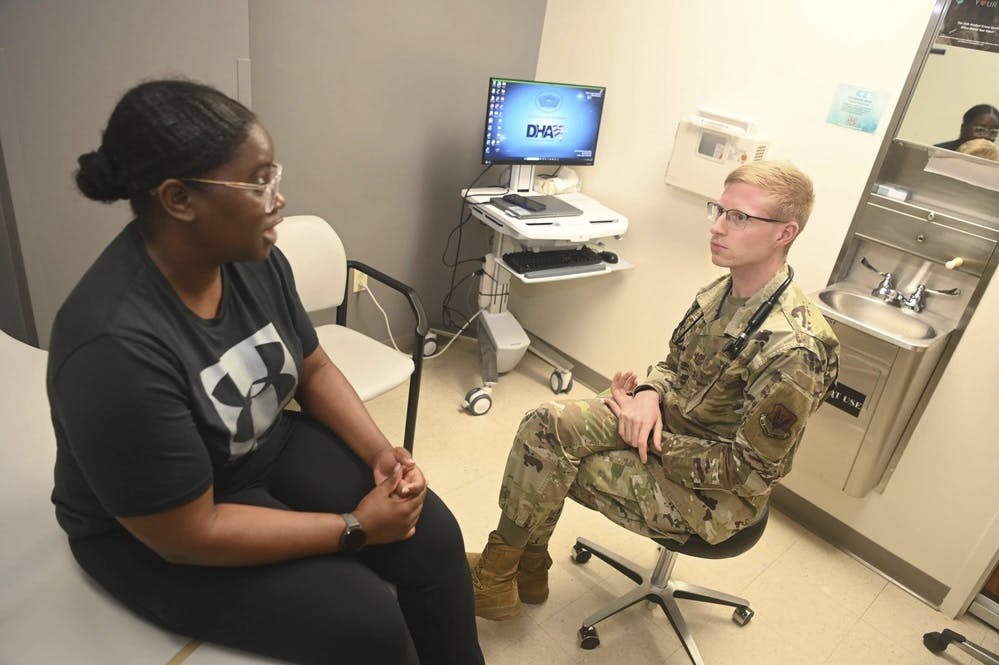How VA is Conquering the Digital Divide
The agency is working to ensure veterans who need remote care are given the resources to overcome financial hardship or a lack of internet access.

The Department of Veterans Affairs is working to pair its recent advances in telehealth capacities with aid programs to bridge the digital divide in rural areas and provide assistance to veterans who might not be able to personally afford new technology.
To accomplish this, the agency has worked to provide mobile devices to both patients and health care providers.
“We’ve distributed over 48,000 webcams to providers and 22,000 headsets, along with thousands of iPads, monitors and speakers for veterans,” said VA Executive Director for Telehealth Dr. Kevin Galpin during an April 28 hearing with the Senate Subcommittee on Military Construction, Veterans Affairs, and Related Agencies. “We recognize because of the digital divide that if we didn’t help them with the technology, that they were not going to be able to participate. So we’ve distributed over 84,000 iPads and 20,000 cellular phones.”
Galpin outlined an ongoing program called the Digital Divide Consults, which ensures qualified veterans who don’t have internet access or a video-capable device receive the technology in order to access remote care.
“We felt we needed a systematic way when we identified a veteran who did not have the internet or technology to participate in our telehealth programs that we could get them assistance,” Galpin said about the program. “Right now, at all of our medical centers, if a provider identifies a veteran in that category, they can refer the veteran to social workers who have now been trained to help veterans overcome the digital divide.”
Once a caregiver identifies that a veteran needs these technical resources, the agency will directly provide the veteran with a tablet that allows them to connect with caregivers from their homes.
“Through the Digital Divide Consults, social workers can see if veterans qualify for one of our internet-connected devices. And that can be sent to a veteran so that they can take advantage of our telehealth services. We’ve distributed more than 84,000 of those iPads since the beginning of the pandemic,” Galpin said.
The VA has also provided financial assistance to veterans who might not be able to afford access to broadband internet, the speeds of which are often necessary to effectively connect to and use these telehealth services.
“The other big thing we do is help them apply for federal subsidies to take advantage of the FCC Lifeline program,” Galpin said of a program that offers discounts on internet bills for veterans, including native veterans who live on tribal lands. “We’re also very excited now to add the Emergency Broadband Benefit into that same process. The EBP now provides, at least temporarily, up to $50 for most veterans, and an additional $75 if you’re on tribal land.”
Going forward, VA is looking to pair its telehealth development strategy with ensuring veterans living in remote areas are able to benefit from newly available resources — including through providing access to caregivers with specialized experience in treating rare medical conditions.
“One of the things that we were able to do in the past year was actually formalize a five-year strategic plan for telehealth. It is an exciting vision for where we’re going in the future. It talks about delivering care without walls, and making sure we can bring care to the veterans wherever they choose to reside irrespective of physical boundaries or geographic distance,” Galpin said. “It talks about making sure we give veterans access to some of our nation’s experts when they have a rare or complicated disease and they need that type of expertise.”
This is a carousel with manually rotating slides. Use Next and Previous buttons to navigate or jump to a slide with the slide dots
-

IHS Prepares to Deploy PATH EHR at Pilot Sites in 2026
IHS targets PATH EHR pilot in 2026, emphasizing governance, collaboration and interoperability as key pillars of the modernization strategy.
4m read -

FEHRM CTO Targets Two-Year Cloud Migration for Federal EHR
Lance Scott touts new EHR tech advancements, including cloud migration, expanded data exchange and AI integration to improve care delivery.
4m read -

VHA’s AI Chief Led NIH’s New AI RFI
The agency's AI chief Gil Alterovitz helped develop a plan that hints at how NIH is charting the future of AI and biomedical research.
5m read -

Trump Taps Maj. Gen. John Bartrum to Lead VHA
Nominated for VA's top health role, Bartrum brings over four decades of military and public service to the agency.
3m read -

AI Growing in Focus Amid HHS Restructure
Department of Health and Human Services officials see promise in artificial intelligence amid efficiency goals.
4m read -

Federal EHR Leaders Eye Ambient Dictation, Interoperability
Officials from DOD and VA said they are exploring new EHR features such as functionality in offline status and interoperability.
5m read -

Federal Agencies Tout Tech in President Trump’s First 100 Days
Defense modernization and health care restructuring landed among some of the key IT highlights within the president's first few months.
6m read -

VA Secretary Tells Congress Tech Efficiencies Will Help Offset Workforce Reductions
Technology improvements will help allow department to maintain veteran care, VA leadership tells Senate Veterans Affairs Committee.
-

NCI Uses Wearables Data to Link Exercise to Cancer Risk
NCI finds a connection between low-intensity exercise and decreased risk of cancer through data collected from wearable technology.
9m listen -

NCI's Tech-Based Therapy Helps Patients Battle HPV-Linked Respiratory Disease
A new tech-based therapy is helping NCI treat patients who suffer from a respiratory illness associated with HPV.
23m listen -

CDC's Strategic Vision for Faster, Smarter Public Health Response
Dr. Jennifer Layden, a key architect of the CDC's Public Health Data Strategy, shares how modern technology is transforming disease detection and response.
9m listen -

Rising Threats Push Agencies to Revamp Cyber Defenses
NIST and DHMS officials boost data security with the evolution of CSF 2.0 and push toward attribute-based access control amid the rise of AI.
3m read
















